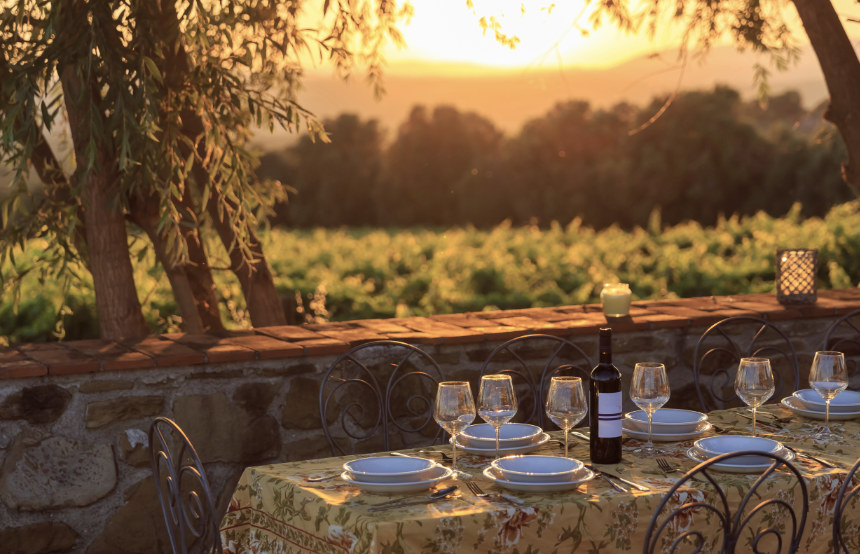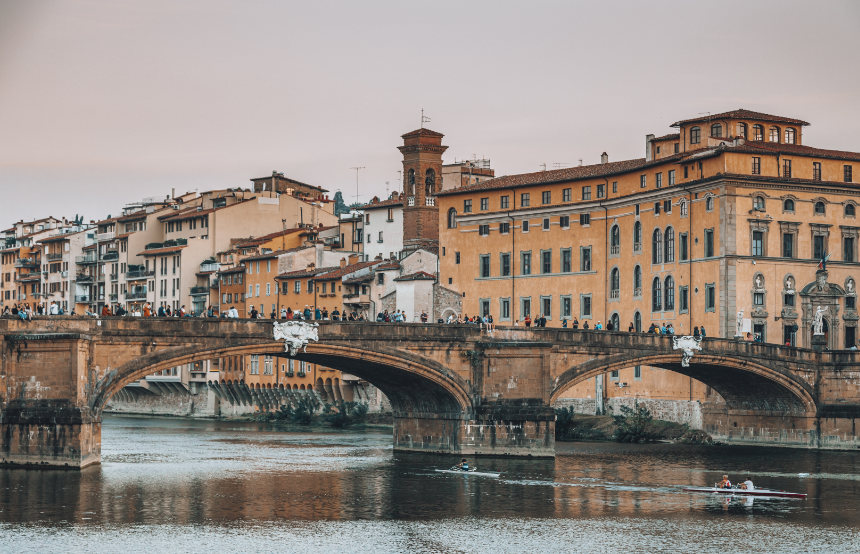Tuscany in spring represents the sweet spot of Italian seasons. Home to high-brow art and even higher-brow food, the ‘Cradle of the Renaissance’ offers a lesson in la dolce vita between March and May. The weather is warm enough to enjoy a gelato during a passeggiata (leisurely evening stroll), but not so toasty that you can't tuck into a hearty bowl of beef ragù pappardelle afterwards. Italy breaks in spring see nature awaken from its winter slumber, with wildflowers boldly announcing themselves across the Tuscan countryside and balmy breezes whispering through nascent grape vines. This is also a time of seasonal festivities and since the towns are not yet teeming with summer-holiday tourists, authentic experiences reign supreme. So if you’re dreaming of your next spring fling, Tuscany is the perfect place to begin an Italian love affair (that’s bound to last longer than just one season).
The Food
Generally speaking, each Italian region champions a different carb at the centre of its cuisine. While Naples favours pizza and Venice is all about rice, in Tuscany it’s bread’s time to shine. Crunchy pane sciocco (salt-less bread) is served as fettunta (similar to bruschetta), blended into pappa al pomodoro (tomato and bread soup), and even added to a salad called panzanella. All of these dishes stem from a tradition of cucina povera, meaning poor cooking, a concept which began when Tuscany was a rural and impoverished area. Embracing a no-waste philosophy, frugal cooks transformed humble ingredients from the countryside into straightforward yet flavour-packed recipes.
Locally produced olive oil and seasonal veg form the foundation of most dishes and spring in Tuscany is the time when this fresh produce is most abundant. Some delicacies include cavolo nero (black cabbage), Florentine tomatoes and beans in many forms (particularly cannellini) – in fact, this love of beans has earned Tuscans the moniker ‘mangiafavoli’ (bean eaters). Other specialities which frequent menus here include rosticciana (grilled pork ribs, brushed with red wine vinegar), fagioli all’uccelletto (cannellini beans cooked with tomatoes, garlic and olive oil) and peposo (slow-cooked beef stew). Pappardelle and pici are Tuscany’s pasta shapes of choice; the former is often served with wild boar, hare or venison ragù, and the latter with aglione (garlicky tomato sauce).
The Wine
Wine is as integral to Tuscany’s identity as its many other gastronomic accomplishments. World-class wines such as Chianti Classico, Brunello di Montalcino and Vernaccia di San Gimignano hail from the region’s abundant (and beautiful) vineyards. If you’re a keen oenophile (wine-lover), plan your own grape escape to the wine estates of Montalcino or Siena, for a deeper understanding of your favourite tipple.

The Festivities
Festivities and food go hand-in-hand in Tuscany, so you’d be hard-pressed to find a celebration that doesn’t involve something to sample or sip on (which is good news for foodies). Easter is always a big deal and depending on when it falls during spring in Tuscany, you’ll find all manner of Holy Week celebrations throughout the region’s towns and cities. Costumed processions and religious services are bookended by Easter feasts of pan di ramerino (bread infused with olive oil, rosemary, dried fruits and nuts), cured meats, chicken soup, roast lamb and la colomba (traditional sweet Easter bread), served alongside Vin Santo (Holy Wine). May marks the beginning of sagra season, a series of village festivals dedicated to each place’s local produce. Reggello – near Florence – hosts a strawberries and cream festival, while San Casciano dei Bagni pays tribute to pici pasta at the Sagra dei Pici. Flowers are another vibrant characteristic of Tuscany in spring and celebrated just as much as food. Enjoy bucolic views and breathe in the floral-scented breeze at the camellia festival in Pisa or azalea celebration in Lucca.
The Sightseeing
With so much to fall in love with, sightseeing is one of Tuscany’s foolproof methods of courtship. Florence – the Tuscan capital – is a warren of antiquity, replete with architectural masterpieces and Renaissance artworks, all wrapped up in UNESCO World Heritage status. Its Gothic-style Duomo, famed Uffizi Gallery and medieval Ponte Vecchio combine to create one of the world’s greatest open-air museums. Sightseeing during spring in Tuscany isn’t only about the man-made treasures; edge a little further out of the city to find a patchwork of rolling fields, tangled vineyards and towering cypress trees lining the roadsides. Interrupting this seemingly endless sea of green are a number of dinky villages and ancient hamlets, each preserving their own rural Italian way of life; San Gimignano, Lucca, Cortona, Montepulciano and Siena are some of our favourites. And as if all of this wasn’t enough, Tuscany also boasts beaches; long, sun-gold sprints of freedom along the Etruscan Coast, stretching from Livorno to Piombino, and ripe for exploring during the sunny springtime climes.
Written by Luisa Watts














